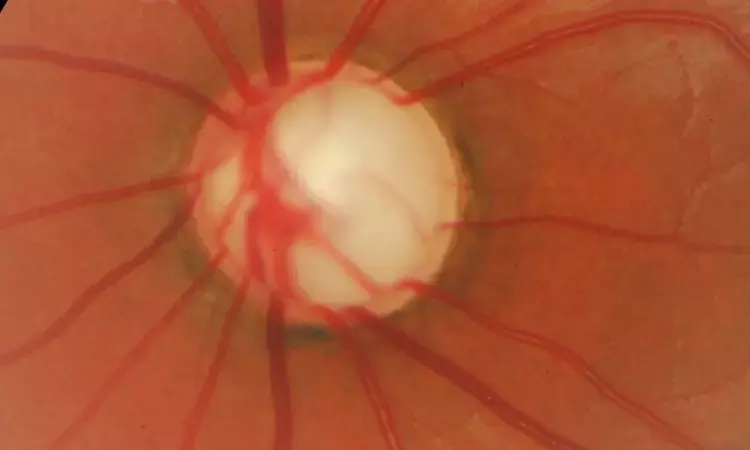- Home
- Medical news & Guidelines
- Anesthesiology
- Cardiology and CTVS
- Critical Care
- Dentistry
- Dermatology
- Diabetes and Endocrinology
- ENT
- Gastroenterology
- Medicine
- Nephrology
- Neurology
- Obstretics-Gynaecology
- Oncology
- Ophthalmology
- Orthopaedics
- Pediatrics-Neonatology
- Psychiatry
- Pulmonology
- Radiology
- Surgery
- Urology
- Laboratory Medicine
- Diet
- Nursing
- Paramedical
- Physiotherapy
- Health news
- Fact Check
- Bone Health Fact Check
- Brain Health Fact Check
- Cancer Related Fact Check
- Child Care Fact Check
- Dental and oral health fact check
- Diabetes and metabolic health fact check
- Diet and Nutrition Fact Check
- Eye and ENT Care Fact Check
- Fitness fact check
- Gut health fact check
- Heart health fact check
- Kidney health fact check
- Medical education fact check
- Men's health fact check
- Respiratory fact check
- Skin and hair care fact check
- Vaccine and Immunization fact check
- Women's health fact check
- AYUSH
- State News
- Andaman and Nicobar Islands
- Andhra Pradesh
- Arunachal Pradesh
- Assam
- Bihar
- Chandigarh
- Chattisgarh
- Dadra and Nagar Haveli
- Daman and Diu
- Delhi
- Goa
- Gujarat
- Haryana
- Himachal Pradesh
- Jammu & Kashmir
- Jharkhand
- Karnataka
- Kerala
- Ladakh
- Lakshadweep
- Madhya Pradesh
- Maharashtra
- Manipur
- Meghalaya
- Mizoram
- Nagaland
- Odisha
- Puducherry
- Punjab
- Rajasthan
- Sikkim
- Tamil Nadu
- Telangana
- Tripura
- Uttar Pradesh
- Uttrakhand
- West Bengal
- Medical Education
- Industry
Smartphones may help prevent glaucoma blindness, study finds

Smartphones could be used to scan people's eyes for early-warning signs of glaucoma - helping to prevent severe ocular diseases and blindness, a new study reveals.
Some of the most common eye-related diseases are avoidable and display strong risk factors before onset, but it is much harder to pinpoint a group of people at risk from glaucoma.
Glaucoma is associated with elevated levels of intraocular pressure (IOP) and an accurate, non-invasive way of monitoring an individual's IOP over an extended period would help to significantly increase their chances of maintaining their vision.
Soundwaves used as a mobile measurement method would detect increasing values of IOP, prompting early diagnosis and treatment.
Scientists at the University of Birmingham have successfully carried out experiments using soundwaves and an eye model, publishing their findings in Engineering Reports.
Co-author Dr. Khamis Essa, Director of the Advanced Manufacturing Group at the University of Birmingham, commented: "We discovered a relationship between the internal pressure of an object and its acoustic reflection coefficient. With further investigation into eye geometry and how this affects the interaction with soundwaves, it possible to use a smartphone to accurately measure IOP from the comfort of the user's home."
Risk factors for other eye diseases are easier to assess - for example, in the case of diabetic retinopathy, individuals with diabetes are specifically at risk and are constantly monitored for tiny bulges that develop in the blood vessels of the eye.
The current 'gold standard' method of measuring IOP is applanation tonometry, where numbing drops followed by non-toxic dye are applied to the patient's eyes. There are problems and measurement errors associated with this method.
An independent risk factor of glaucoma is having a thin central corneal thickness (CCT) - either by natural occurrence or a common procedure like laser eye surgery. A thin CCT causes artificially low readings of IOP when using applanation tonometry.
The only way to verify the reading is by a full eye examination - not possible in a mobile situation. Also, the equipment is too expensive for most people to purchase for long-term home monitoring.
IOP is a vital measurement of healthy vision, defined as pressure created by continued renewal of eye fluids.
Ocular hypertension is caused by an imbalance in production and drainage of aqueous fluid - most common in older adults. Risk increases with age, in turn increasing the likelihood of an individual developing glaucoma.
Glaucoma is a disease of the optic nerve which is estimated to affect 79.6 million people world-wide and, if left untreated, causes irreversible damage. In most cases, blindness can be prevented with appropriate control and treatment.
Hina Zahid Joined Medical Dialogue in 2017 with a passion to work as a Reporter. She coordinates with various national and international journals and association and covers all the stories related to Medical guidelines, Medical Journals, rare medical surgeries as well as all the updates in the medical field. Email: editorial@medicaldialogues.in. Contact no. 011-43720751
Dr Kamal Kant Kohli-MBBS, DTCD- a chest specialist with more than 30 years of practice and a flair for writing clinical articles, Dr Kamal Kant Kohli joined Medical Dialogues as a Chief Editor of Medical News. Besides writing articles, as an editor, he proofreads and verifies all the medical content published on Medical Dialogues including those coming from journals, studies,medical conferences,guidelines etc. Email: drkohli@medicaldialogues.in. Contact no. 011-43720751


